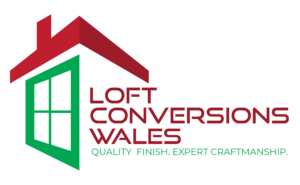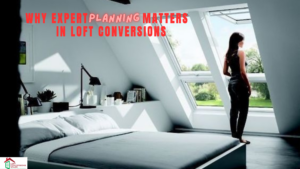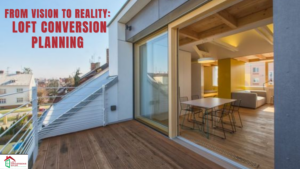Imagine strolling through the trendy Roath district of Cardiff, where you’ll find an eclectic mix of classic Victorian architecture and contemporary urban design entrance hall. As you wander its vibrant streets, you can’t help but notice the rise in loft conversions that have transformed this once overlooked neighbourhood into a sought-after hotspot for artists and young professionals alike.
This urban renewal trend has revitalized the area’s economy and breathed new life into its historic buildings.
In this article, we’ll delve deep into the history of Roath, explore how urban renewal has spurred growth in this thriving district, and reveal why loft conversions are becoming increasingly popular among property owners. We’ll share successful loft conversion projects that have added value to homes while preserving their architectural integrity and provide expert tips on planning your own unique space.
So whether you’re considering a loft conversion or simply seeking inspiration from innovative design ideas – read on to discover all things, Roath!
The History of Roath District
You might not know it, but the trendy Roath district has a rich history to explore.
With its Roath origins dating back to pre-Norman times, this area of Cardiff has seen various transformations over the centuries.
Initially an agricultural community with a small population, Roath started gaining cultural significance in the 19th century when it became home to several grand estates and mansions, reflecting the prosperity of the local coal industry.
As you delve deeper into Roath’s past, you’ll discover that various religious institutions and community spaces shaped its cultural landscape.
The construction of St Margaret’s Church in 1870 added an architectural gem to the area while also serving as a hub for Anglican worship; similarly, Plasnewydd Presbyterian Church (now known as The Gate Arts Centre) played a significant role in shaping Roath’s religious identity.
With such historical landmarks still standing amidst modern loft conversions and urban renewal projects, it becomes evident how this once-rural district has evolved into one of Cardiff CF23 most vibrant neighbourhoods.
The Rise of Urban Renewal in Roath
In recent years, you’ve likely noticed the surge in revitalization efforts breathing new life into the Roath area, transforming once-neglected spaces into modern, stylish living quarters. This Roath revitalization has gained momentum due to a combination of factors that have made it attractive for developers and potential residents.
Architectural innovation and economic and social changes have contributed to this rise in urban renewal. As an analytical observer of these changes, you can see some key aspects driving this transformation:
– A shift towards more sustainable living: The adaptive reuse of existing buildings reduces waste and keeps construction costs low.
– The demand for unique living spaces: Loft conversions offer open-plan interiors with high ceilings and large windows – desirable features for many young professionals.
– Increased local amenities: New bars, cafes, shops and galleries are popping up around Roath, creating a vibrant community atmosphere.
– Improved transportation links: Enhanced public transport options make commuting to Cardiff County Council city centre convenient and hassle-free.
– Government incentives: Grants or tax breaks may be available for property developers undertaking regeneration projects.
These factors combined have contributed to the ongoing trend of loft conversions and urban renewal in the trendy Roath district of Cardiff. As a knowledgeable observer on this matter, you can appreciate how these efforts not only provide much-needed housing solutions but also help preserve cherished historical architecture while promoting sustainable development practices.
The Benefits of Loft Conversions
This approach is particularly beneficial in urban neighbourhoods like Roath, where land is at a premium, and residents value the character of their historic properties. Loft conversions contribute to sustainable living by efficiently using existing structures rather than building anew on undeveloped land or demolishing older buildings. This process reduces waste and conserves resources while maintaining Roath’s unique architectural heritage.
Embracing loft conversions offers numerous advantages. These include creating spacious, light-filled living spaces that cater to modern tastes while preserving historic architecture and promoting greener, more sustainable development. By transforming unused attic space into a functional area, you’re optimizing the available square footage in your home and reducing the need for additional construction or expansion.
Additionally, with appropriate insulation and energy-efficient windows installed during conversion, you can further reduce your carbon footprint and improve your home’s overall energy performance. So, when considering ways to enhance your lifestyle and Roath’s vibrant community, look no further than loft conversions for an innovative solution combining space optimization with sustainability.
Inspiring Design Ideas
Imagine yourself stepping into a beautifully transformed space that seamlessly blends history and modernity, evoking a sense of awe and inspiration tiled floor within you.
As you explore the trendy Roath district of Cardiff Terrace house, known for its loft conversions and urban renewal projects, consider some inspiring design ideas that can elevate your living space.
Creative lighting solutions and sustainable materials are two critical elements in these stunning lofts, which perfectly harmonize with the historical charm of their surroundings while providing a contemporary touch.
As you walk through these stunning converted lofts, notice how creative lighting enhances architectural features and creates a warm ambience.
Designers often use pendant lights or industrial-style fixtures to emphasize high ceilings or exposed beams while adding character to the open floor plans. Innovative LED light strips can be incorporated into shelves or under cabinets to provide subtle illumination without overpowering the space.
Sustainable materials like reclaimed wood flooring or recycled metal accents contribute to the eco-friendly charm and lend an authentic appeal to these urban retreats.
By incorporating environmentally friendly materials, you’re positively impacting the environment and investing in durable products that will stand the test of time.
So as you take inspiration from these stylish Roath District lofts, remember that creative lighting and sustainable materials can make all the difference in crafting your dream living space with history and modernity at its core.
Tips for Planning Your Own Loft Conversion Design Process
So you’re considering transforming that unused attic space into a chic loft conversion in the vibrant Roath district of Cardiff? Before diving headfirst into your project, it’s essential to familiarize yourself with some common loft conversion challenges and consider using sustainable materials for an eco-friendly renovation of Detached House.
By doing so, you’ll not only create a stylish and functional living space but also contribute positively to the environment.
One of the primary challenges when planning your loft conversion is ensuring that the existing structure can support additional weight and alterations. To address this issue, consult a structural engineer to assess the load-bearing capacity of your home’s foundations, walls, and roof.
Additionally, remember that local building regulations may impact your design decisions – be sure to obtain any necessary permits before proceeding with construction.
As for sustainable materials, consider options like reclaimed wood or metal beams for structural support, bamboo flooring for its durability and renewability, recycled glass tiles for attractive yet environmentally friendly accents, and energy-efficient insulation products such as sheep’s wool or cellulose-based materials.
These choices provide excellent performance and demonstrate your commitment to preserving resources and reducing waste during your Roath district loft conversion project.
Frequently Asked Questions
What is the average loft conversion cost in Cardiff’s Roath district?
Determining the average loft conversion cost in Roath can vary, but expect to pay around £20,000-£50,000. Loft conversion benefits include added space and value while keeping up with Roath design trends.
Are any specific building regulations or planning permissions required for loft conversions in Roath?
Yes, there are specific Roath regulations for loft conversions. The permission process involves obtaining planning permission and adhering to building control requirements. Thoroughly research local guidelines to ensure a smooth project.
How do loft conversions in Roath impact the property’s value and marketability?
Loft conversion benefits in Roath significantly boost your property’s value and marketability due to the district’s appeal. An expertly executed conversion maximizes space, adds functionality, and attracts potential buyers seeking modern Cardiff living.
Are there any local architects or contractors in Roath who specialize in loft conversions?
Yes, there are Roath contractors and architect options specializing in loft conversions. Seek local firms with experience in urban renewal projects to enhance your property’s value and marketability.
What common challenges or obstacles are faced during loft conversions in Roath’s historic buildings?
In Roath’s historic buildings, loft conversions face challenges like adhering to historic preservation guidelines and navigating structural limitations. You must balance modern conveniences with maintaining the building’s unique character.
You’ll find that Roath’s urban renewal and trendy loft conversions create a vibrant, thriving community.
With its rich history, it’s no surprise the area has become a hub for stylish living spaces.
If you’re considering your loft conversion in Roath, plan carefully and consider the benefits such projects bring. By doing so, you’ll contribute to this exciting district’s ongoing rejuvenation while enjoying modern living at its best.


